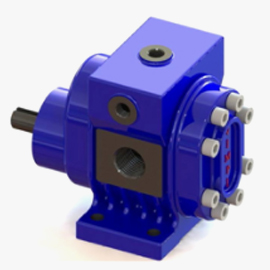HIGH PRESSURE PUMPS
HIGH PRESSURE PUMPS
Work just in same way gear pumps operate. The pump shaft, driven by the gear gives circular motion to the driving gears which causes the driven gear to move in the opposite direction to its motion pattern (Fig 1). As the gears set apart, fluid fills the gap created in between, and then conveyed to the discharge zone with the rotating motion of gears (Fig 2), to be finally discharge to the delivery line as teeth mesh (Fig 3). A pressure level of up to 30 bars can be achieved, depending on the viscosity of the liquid.
High – pressure pumps are consisting of two moveable parts and they have positive displacements.
Pump shaft obtains the rotational movement from the motor and transmits this movement to the driving gear on the shaft. While the driving gear transmits its motion to the driven gear in the opposite direction, the gears began to separate each other. Thereby vacuum occurs.
Pump sucks the constant amount of liquid by the virtue of vacuum. Therefore, this sucked fluid flows from gear teeth spaces to the discharge outlet.
While the gears meshing in the discharge outlet, pressure occurs and this motion allows the fluid transfer to the outside.
Pump will reveal the pressure regarding to opposite resistance and transfer the liquid belongs to its own volume by every revolution of shaft. Henceforth capacity of pump is directly proportional to its magnitude and Rpm.



@2021 Vimpi Viscous Liquid Pumps. All rights reserved.




